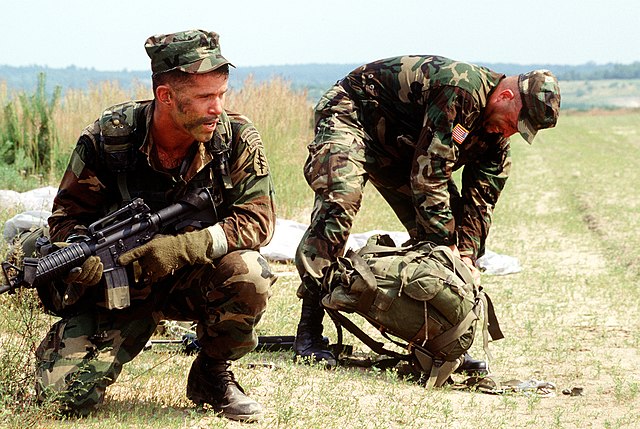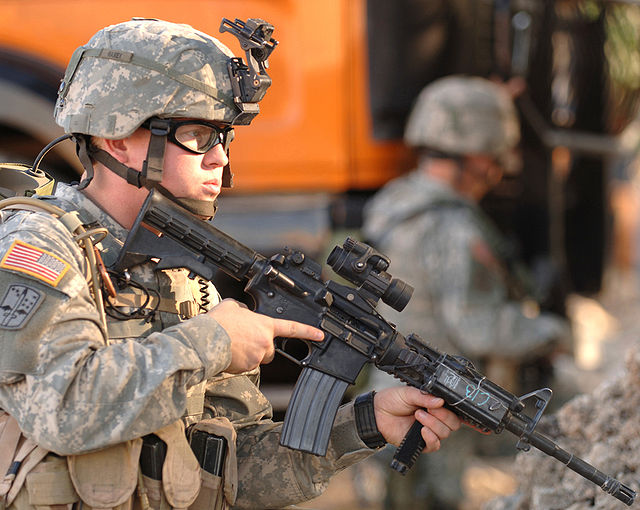The M4 carbine is a 5.56×45mm NATO, gas-operated, magazine-fed carbine developed in the United States during the 1980s. It is a shortened version of the M16A2 assault rifle.
A 10th Special Forces Group soldier with an M4 carbine during an exercise in July 1995
A U.S. Army 82nd Airborne soldier holds an M4 carbine in Vitina, Kosovo in January 2000 during the NATO-led KFOR mission, the first operational use of the M4 by U.S. troops
M4 with M68 Close Combat Optic and AN/PAQ-4
M4 with the newer, redesigned telescoping stock
The 5.56×45mm NATO is a rimless bottlenecked intermediate cartridge family developed in the late 1970s in Belgium by FN Herstal. It consists of the SS109, L110, and SS111 cartridges. On 28 October 1980, under STANAG 4172, it was standardized as the second standard service rifle cartridge for NATO forces as well as many non-NATO countries. Though they are not entirely identical, the 5.56×45mm NATO cartridge family was derived from and is dimensionally similar to the .223 Remington cartridge designed by Remington Arms in the early 1960s.
5.56×45mm NATO with measurement, left to right: Bullet, case, and complete cartridge
The 7.62×51mm NATO and 5.56×45mm NATO cartridges compared to an AA battery
Service rifle cartridge cases: (left to right) 7.62×54mmR, 7.62×51mm NATO, 7.62×39mm, 5.56×45mm NATO, 5.45×39mm
5.56×45mm NATO cartridges in a STANAG magazine








